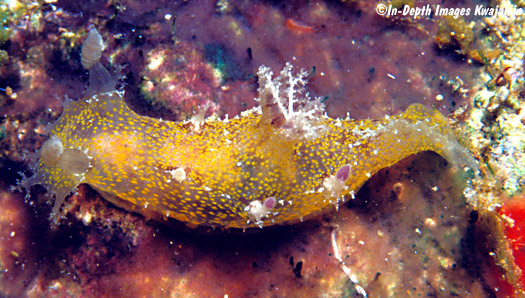
These animals are probably Plocamopherus pecoso although they more seem to have more discrete orange spotting than the original. It is known in the Marshalls from many specimens found at Enewetak and Kwajalein Atolls. The 16 Enewetak specimens were found under dead coral or aluminum siding storm debris on lagoon reefs and pinnacles at depths of 3 to 11 meters. The rest are from Kwajalein, where they can be fairly commonly found feeding on bryozoans growing on clumps of Halimeda algae on a couple of shallow lagoon sand spits in 6 to 8 meters. Specimens ranged from 6 to 27mm in length. Like some other members of the genus Plocamopherus, this species has several patches on the body that phosphoresce when the animal is disturbed. The tail is flattened into a kind of keel, which the animal can use for swimming. It swims by laterally bending the body back and forth, lifting the animal up in the water, usually in an upside-down position. One specimen deposited an orange yellow egg mass in captivity. Ova measured 90 to 100 µm in ovoid capsules measuring 173 to 205µm.
The first two photos below are of Enewetak specimens. Plocamopherus pecoso was first reported in the Marshalls from Enewetak Atoll by Johnson & Boucher (1984).

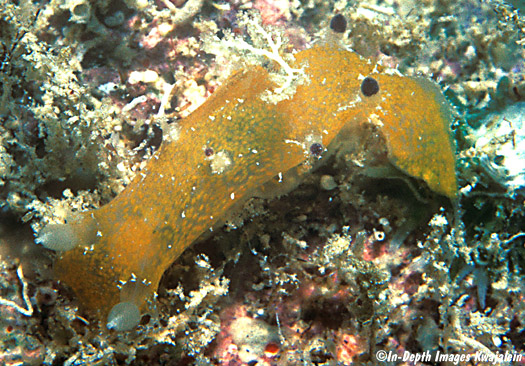
The remaining photos were taken at Kwajalein. The one just below shows an animal in the clump of Halimeda cylindracea where it was living.
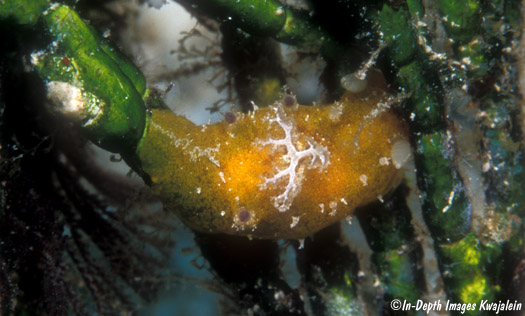
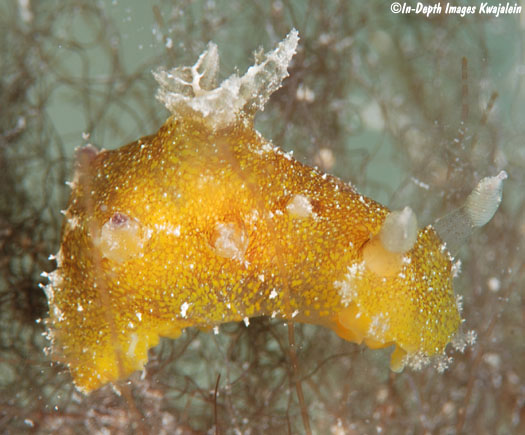
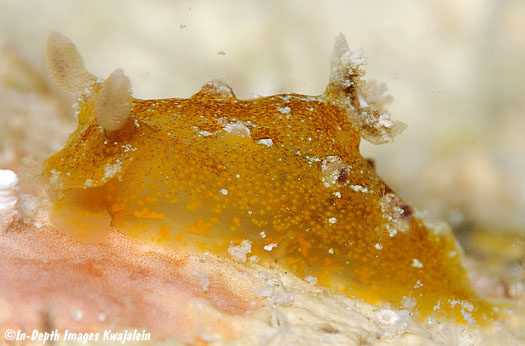
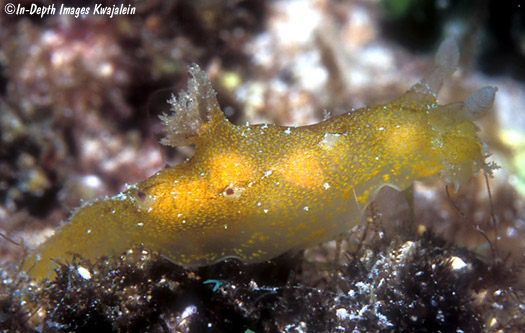
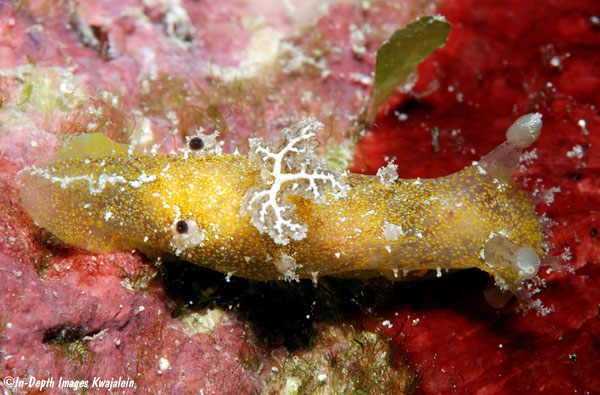
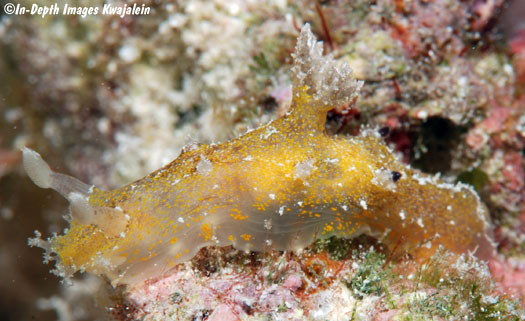
The one below was from a Kwajalein lagoon Halimeda patch on 14 August 2011.
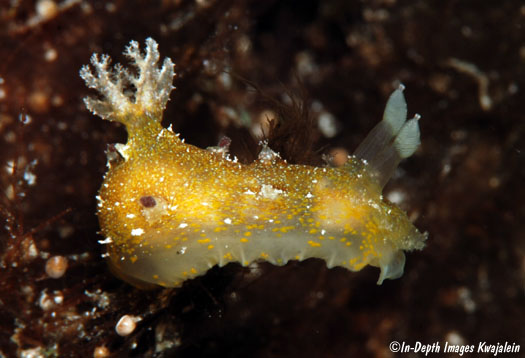
Created 3 January 2007
Updated 2 December 2021